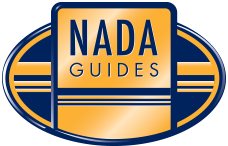Purchasing an RV, whether new or used, is an exciting venture that opens up a world of travel without leaving the comforts of home behind. However, with the cost of RVs and campers being quite substantial, most buyers rely on RV financing. An RV loan calculator is a crucial tool in determining how much you can afford and what your monthly payments will be. This article will guide you through using an RV loan calculator, the application process for RV loans, understanding the terms and interest rates, and comparing various financing options to help you make the smartest decision on buying an RV.
What is an RV Loan Calculator and How Does it Work?
An RV loan calculator is a tool that simulates your future loan payments by taking into account various factors such as the loan amount, loan term, and interest rate. It helps buyers by providing a clear picture of how much they will need to pay monthly for their RV or camper, thus aiding in determining the affordability of the vehicle. The calculator uses a standard loan payment formula to generate these estimates.
What Information Do You Need for an RV Loan Calculator?
To effectively use an RV loan calculator, you will need specific details. These include the total loan amount, which is the price of the RV minus any down payment or trade-in value, the interest rate you expect to secure based on your creditworthiness, and the loan term you prefer, which can range from a few years to as long as 20 years. Providing accurate information ensures the most precise estimates.
How Accurate are RV Loan Calculators?
RV loan calculators are fairly accurate as long as the input information is correct. They provide estimates based on standard formulas for calculating loan payments. However, the final loan rate and terms offered by lenders can still vary. Therefore, while an RV loan calculator gives a good approximation, the actual loan details may differ slightly based on lender-specific factors.
Can an RV Loan Calculator Help in Deciding How Much RV You Can Afford?
Yes, an RV loan calculator is invaluable in determining the affordability of an RV or camper. By estimating the monthly payments, it helps you align your personal finances with the cost of financing an RV. This ensures that you can comfortably afford the RV without overstretching your budget. Using the calculator smartly can prevent potential financial strain by keeping your loan payments within a manageable range.
How to Apply for an RV Loan?
Applying for an RV loan involves several key steps and preparation. Understanding the requirements and ensuring you have all necessary documents can streamline the process and increase your chances of approval. Being well-prepared can also help secure better loan terms and interest rates.
What are the Requirements to Get an RV Loan?
To get an RV loan, lenders typically require proof of income, a good credit score, and sometimes a detailed summary of your assets and liabilities. They will assess your ability to repay the loan based on your credit history and financial health. Some lenders may also require the RV to be used as collateral, particularly for secured loans.
Steps to Apply for an RV Loan
The first step in applying for an RV loan is to research and compare different lenders and their offers. Once you find suitable lenders, gather necessary documents such as income statements, tax returns, and proof of identity. Submit your application and wait for the lender’s approval. Upon approval, review the loan terms and conditions carefully before finalizing the agreement.
What Should You Prepare Before Applying for an RV Loan?
Before applying for an RV loan, prepare by improving your credit score if necessary, saving for a down payment to reduce the loan amount, and gathering all required documents. It is also wise to calculate your budget and decide the monthly payment range you are comfortable with. Being well-prepared increases your chances of securing favorable loan terms.
Understanding RV Loan Terms and Interest Rates
Comprehending how loan terms and interest rates work is crucial for making informed decisions when financing an RV. Different factors can affect these elements, and understanding them helps in selecting the best loan options available.
What Factors Affect RV Loan Terms and Interest Rates?
Several factors influence RV loan terms and interest rates, including the borrower’s credit score, the loan amount, the loan term, and whether the RV is new or used. Higher credit scores often secure lower interest rates and better loan terms. Additionally, new RVs may qualify for better rates compared to used RVs, which might attract higher interest rates due to perceived depreciation risks.
How to Choose the Best RV Loan Terms?
Choosing the best RV loan terms involves balancing the interest rate and the loan term duration. Opting for a shorter loan term generally means paying less interest overall, while a longer term can reduce monthly payments but increase the total interest paid. Evaluate your financial situation to find a suitable balance that meets your affordability criteria without causing undue financial strain.
Is a Longer Term Better for RV Loans?
While a longer term can result in lower monthly payments, it is not always the best choice. Extended loan terms mean paying more interest over time, which increases the overall cost of the loan. Consider your financial stability and long-term goals before deciding on the loan term. Sometimes, shorter terms with slightly higher monthly payments can be smarter and more cost-effective in the long run.
What Financing Options are Available for RVs and Campers?
When it comes to financing RVs and campers, various options are available. These include secured and unsecured loans, each with its own advantages and disadvantages depending on the borrower's circumstances.
Should You Choose Secured or Unsecured RV Loans?
Secured RV loans require the RV itself to be used as collateral, which can result in lower interest rates given the reduced risk to the lender. Unsecured RV loans, on the other hand, do not require collateral but may come with higher interest rates and stricter credit requirements. Your choice depends on your financial situation, credit score, and comfort with using the RV as collateral.
Are There Differences in RV Financing for New and Used RVs?
Yes, financing options can vary significantly between new and used RVs. New RVs often come with more attractive financing terms, including lower interest rates, due to their higher initial value and lower depreciation risk. Used RVs, while generally cheaper, may attract higher interest rates and shorter loan terms due to the increased risk associated with their older condition and potential maintenance issues.
How to Compare Financing Options for the Best RV Loan?
To find the best RV loan, compare interest rates, loan terms, and the total cost of the loan across multiple lenders. Online resources and RV loan calculators can help evaluate different financing options. Pay attention to any additional fees or penalties for early repayment. Making these comparisons ensures that you secure the most cost-effective and manageable financing option for your RV or camper purchase.
How to Calculate Your Monthly Payment for an RV Loan?
Determining your monthly payment is essential in understanding the financial commitment involved in an RV loan. This calculation helps in budgeting and ensures that your loan payments remain affordable over the loan term.
What is the Formula for Monthly Payment Calculation?
The formula to calculate monthly payments for an RV loan is derived from the standard loan amortization formula: M = P [r(1+r)^n] / [(1+r)^n – 1], where M is the monthly payment, P is the loan amount, r is the monthly interest rate, and n is the total number of payments. This formula considers the principal amount, interest rate, and loan term to provide the monthly payment amount.
How Does the Loan Term Affect Your Monthly Payment?
The length of the loan term directly impacts the monthly payment. Longer terms spread the loan amount over more payments, resulting in lower monthly payments but higher total interest paid. Conversely, shorter terms mean higher monthly payments, but you will pay less interest overall. It is crucial to choose a loan term that fits your budget while minimizing the cost of financing.
Can You Lower Your Monthly Payment?
Lowering your monthly payment is possible by opting for a longer loan term, though this increases the overall interest paid. Another way to reduce payments is by negotiating a lower interest rate, potentially through improving your credit score or putting a larger down payment to reduce the loan amount. Refinancing at a lower rate can also help manage and lower monthly payments.
FAQ
Q: How do I use the RV loan calculator to estimate my monthly payments?
A: To use our RV loan calculator, input the loan amount, interest rate, and loan term to get an estimate of your monthly payments. This tool helps you plan your budget when you’re financing an RV.
Q: How long can you finance an RV?
A: RV loans typically offer terms ranging from 5 to 20 years. The length of your RV loan depends on the type of loan, the lender, and your financial profile.
Q: Can I finance both a new and used RV?
A: Yes, you can finance both new and used RVs. However, rv loan rates may differ between a new RV and a used RV, so it's wise to compare options carefully.
Q: What factors affect RV loan rates?
A: RV loan rates are influenced by several factors, including your credit score, the loan amount, the type of RV you’re financing, and the loan term. New RVs and used RVs may have different rates.
Q: Is it possible to prequalify for an RV loan?
A: Many RV lenders offer the option to prequalify for an RV loan. Prequalifying can give you an idea of the loan amount and terms you may be eligible for without impacting your credit score.
Q: Can I get a loan for an RV if I have a low credit score?
A: While having a low credit score may make the financing process more challenging, it is still possible to get a loan. You might face higher rv loan rates or may need to provide additional collateral for the loan.
Q: What is the best loan option for financing a camper?
A: The best loan option depends on your financial needs. Personal loans, RV loans, and auto loans are viable choices, each with its own pros and cons. Comparing terms and rates can help you find the best rv loan rates for your situation.
Q: How can I pay off my RV loan faster?
A: To pay off your RV loan faster, consider making extra payments, rounding up your monthly payments, or applying any unexpected cash windfalls directly to your loan principal. This can help you save on interest over the term of the loan.
Q: Are there different financing options for a travel trailer?
A: Yes, there are various financing options for travel trailers, including RV loans, personal loans, and even some dealership financing options. Each has its own terms and conditions, so it’s smart to compare them.















